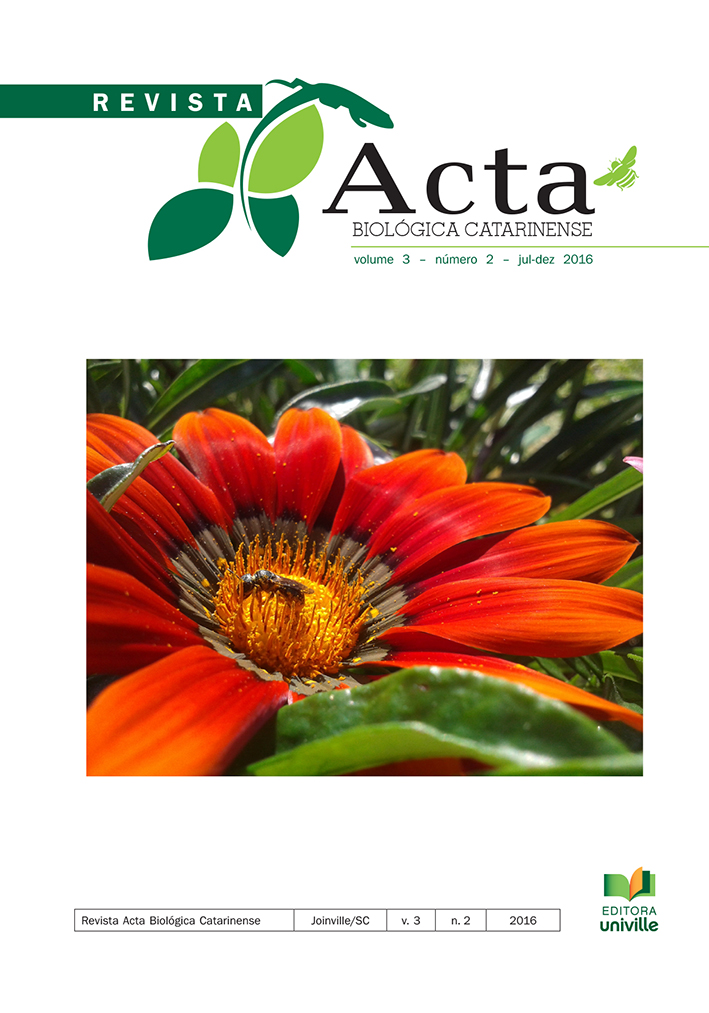Root anatomy of seedlings of Virola bicuhyba (Schott) Warb.
DOI:
https://doi.org/10.21726/abc.v3i2.480Palavras-chave:
becuiba; Myristicaceae; root anatomy.Resumo
Virola bicuhyba (Schott) Warb. (Myristicaceae), an arboreal basal angiosperm, had its root system questioned by empirical observations occurred when trees fell by windstorms and which showed no main root. This study aimed to verify the anatomy of the emerging root system of V. bicuhyba from the analysis of seedling roots, obtained by seed germination. Material for analysis was fixed, included in paraffin, sectioned, mounted in permanent slides and examined under light microscope. The first root has 16-17 strands of xylem arranged in a circle around a large central region occupied by pith; phloem consists of 16-17 strands of few conductive cells and parenchyma cells between each pole of protoxylem, characterizing a hollow vascular cylinder. In the lateral roots, the xylem have only 5-6 poles of exarch protoxylem, interspersed with 5-6 distinct phloem strands and a central region occupied by metaxylem without pith. Idioblasts containing clearly distinct substance occur associated with the xylem and close to the pericycle. Virola bicuhyba has a first root that does not present the typical anatomical pattern of root originated from embryo radicle but similar to the adventitious root. This combination of features is not common, but has been observed in species of Clusiaceae.


